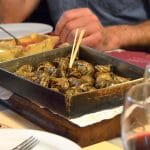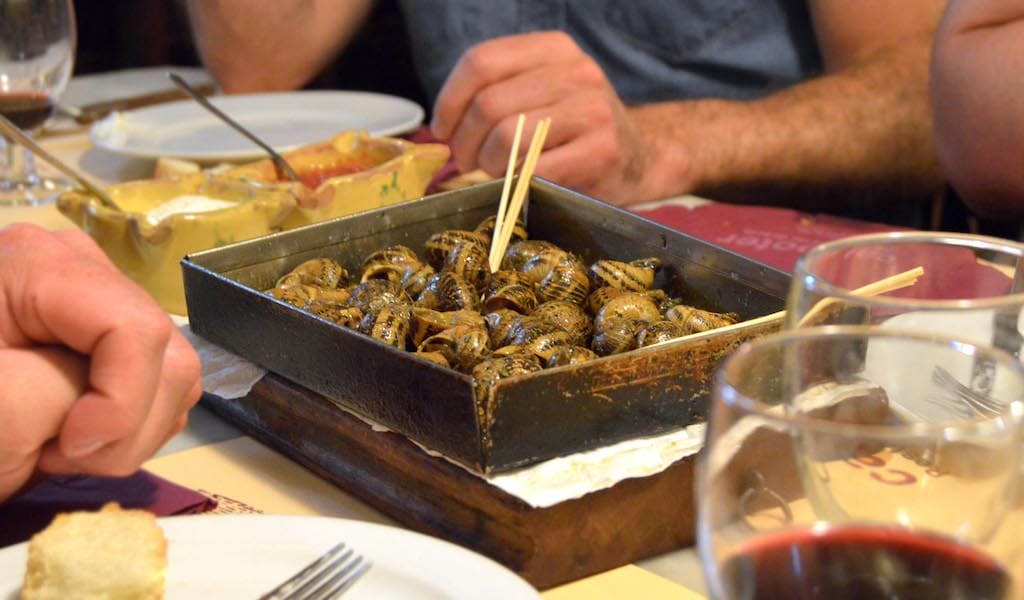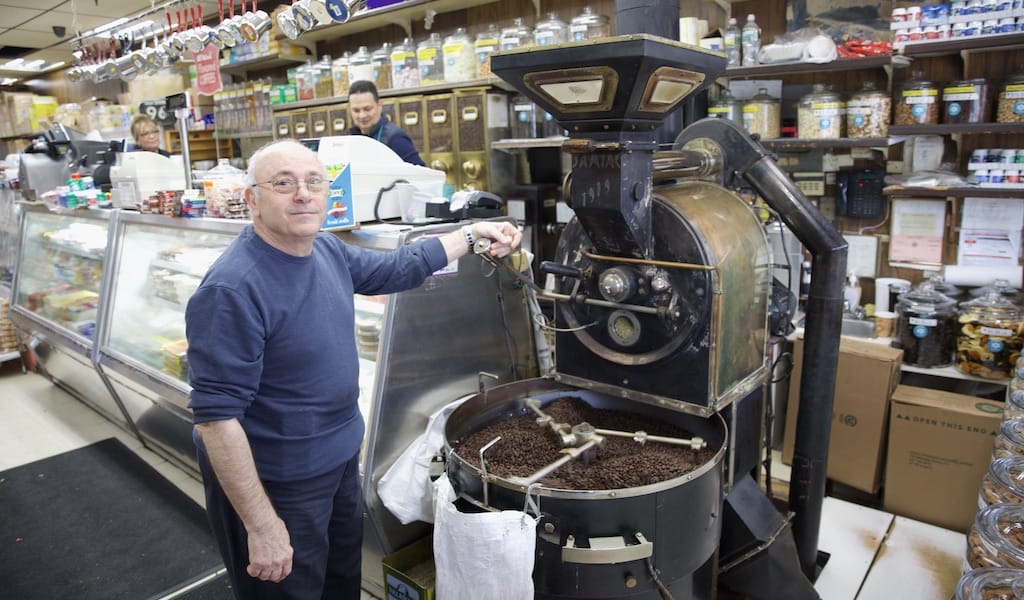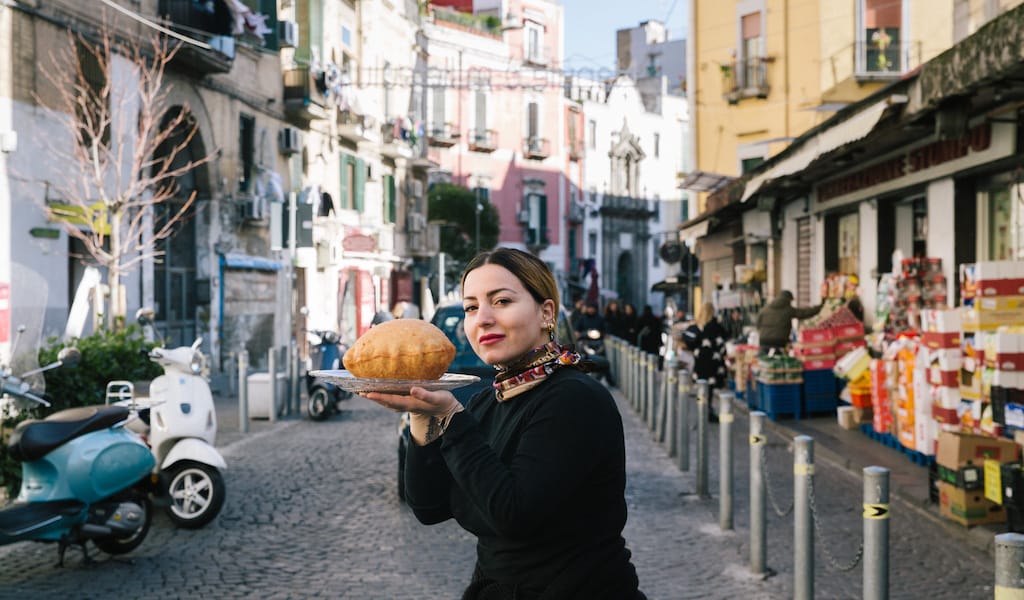Update: This spot is sadly no longer open.
Visitors to Istanbul’s iconic Spice Bazaar encounter a place packed wall-to-wall with overzealous shopkeepers selling everything from saffron to sumac assembled in rows of majestic pyramids at slightly inflated prices.
But for our money, the only spices worth a damn are found just outside in a humbler setting. Crammed behind a tiny kiosk perched in front of a fast-food restaurant that flanks one of the bazaar’s entrances is the endearing Orhan usta. The loveable 65-year-old is a veritable master of çig köfte and a connoisseur of the spicy red pepper flakes cultivated in his hometown of Gaziantep, the southeastern city considered by many to be Turkey’s culinary capital.
While it’s traditionally made of raw meat (çig köfte translates to “raw meatball”), the versions found around Istanbul are typically vegetarian, a mix of bulgur wheat, tomato paste, pureed potato and, in Orhan usta’s version, a healthy dose of fiery Antep red pepper. This is slathered across a slice of lavaş flatbread and topped with fresh parsley and a dollop of a potent, piquant sauce made of the pepper native to Antep, where Orhan usta ran a market prior to coming to Istanbul 20 years ago.
A shining example of the usta that we have tried to celebrate in these pages, Orhan usta is a true master who has honed and perfected a few select crafts over many years of working with his hands. He embodies this to the fullest, and his çiğ köfte is the proof, undoubtedly some of the best we’ve ever tasted. The sample he handed us before expertly rolling up our dürüm pleasantly surprised us with the punch it packed.
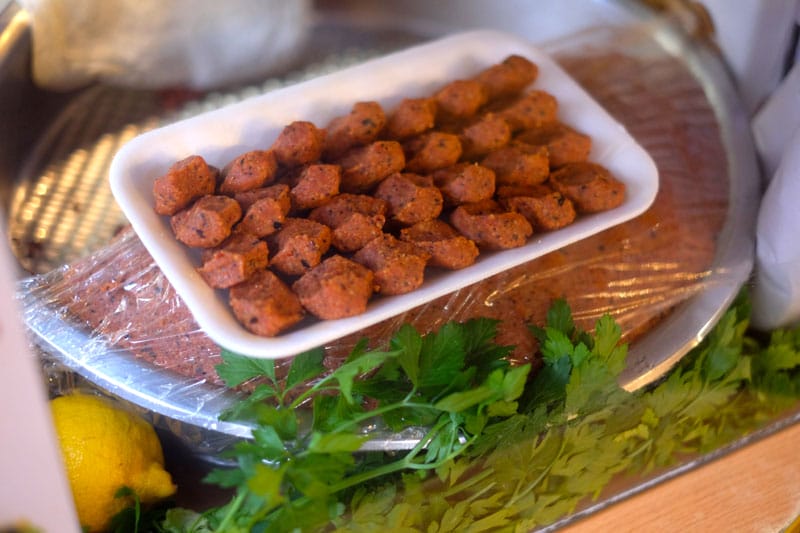
“It’s cold out, and based on the weather I made it spicier,” Orhan usta said with the disarming smile that never seems to leave his impossibly gentle, kind face. “But it fades quickly, it doesn’t burn.”
A wave of spice crescendoed before cascading rapidly, disappearing as soon as it showed up on the scene. Our dürüm vanished in a similarly quick fashion, and we were delighted at our new discovery. We were intrigued when Orhan usta told us that on Saturdays he makes a more traditional version, with raw beef and Antep pistachios. Don’t expect to find that anywhere else in Istanbul.
But our first visit unfortunately coincided with the tail end of Orhan usta’s lengthy stint, as the elderly master is packing it in after 20 years and moving back to Gaziantep to escape the perpetual pandemonium of Istanbul. The main reason he’s retiring is his health, as he presently suffers from diabetes and high blood pressure. His wrinkled hands shook as he prepared our dürüm, and his voice quivered while he gingerly discussed his recipe and process.
“95 percent of çiğ köfte makers in Istanbul use a machine,” Orhan usta said, though he has always made his by hand. In recent years, this has become increasingly difficult, and he plans to throw in the towel within the next two months.
“I was going to stop by the end of the year, then I postponed it. But I’m definitely retiring in March,” he said.
A dürüm costs TL 4 (US$1), while half a kilo of his beloved homemade Antep acı biber flakes – characterized by a gorgeous hue falling smack dab between crimson and ash – is TL 15. Needless to say, we didn’t leave empty-handed.
Orhan usta also gave us a copy of his recipe. He has been handing out the recipe to customers since last year, determined that it lives on long after he does. Walking us through the process step by step, he waxed poetic about his cherished ingredients.
The blend of his powerful pepper sauce will forever remain a secret, he said, as he produced a tantalizing melange of spices that forms the foundation of the exhilarating relish. He showed us the bag and encouraged us to smell it, revealing that cumin and black pepper were involved while declining to disclose the other six in the mix.
Istanbul is a city of forgotten institutions falling by the wayside, one after the next. A stone’s throw from the Spice Bazaar is a centuries-old tradesmen’s inn housing the last generation of a long line of coppersmiths and silversmiths, who elegantly pound out intricately designed mirrors, combs and candlestick holders. After those guys are gone, there won’t be a new wave to take their place. Their traditions, craftsmanship and designs will be lovingly remembered for a spell before eventually fading away.
Orhan usta has distributed his recipe in a frenzy in order to thwart the disintegration of the carefully tweaked mixture into the vast, unforgiving dustbin of history. Perhaps someone skilled in the kitchen will be able to replicate it successfully. Maybe it will make its way into a cookbook and become the standard. But in a matter of weeks, the man himself will no longer be in Istanbul. His çiğ köfte is beyond good, but we wouldn’t want to evaluate it outside of the context of his charming countenance, punctuated by a pair of salt and pepper eyebrows and a neatly-cropped mustache.
We wish we had stumbled upon Orhan usta much earlier, but we’re glad we did before it was too late. It would be an understatement to say that we vigorously recommend paying him a visit before he takes down the spice rack.
Published on January 18, 2017
Related stories
September 29, 2018
Barcelona | By Culinary Backstreets
BarcelonaLow in fat and calories and rich in minerals and proteins, the snail is an old staple with a newfound popularity – while perhaps not as obsessed as the Romans were, Catalans are rediscovering all the benefits of snails: they’re nutritious, tasty and easy to raise. We sample some on our Made in Catalonia walk.
February 9, 2023
QueensFew places in New York are home to such a diverse cross section of the Jewish diaspora as Forest Hills, especially the broad stretch of 108th Street tucked behind the imposing apartment blocks that abut Queens Boulevard. If you stand in front of Carmel Grocery, a plain-looking shop at the heart of the modest business…
Dig into Naples’ many fried foods on our walk.
June 21, 2022
NaplesAfter a morning spent walking around the Fontanelle Cemetery, the oldest ossuary in Naples, and the Sanità market, we believe that we have created enough of a calorie deficit to face a fried pizza – the original pizza, born before the more familiar oven-baked variety, and a universally beloved dish in the Neapolitan cuisine –…









































